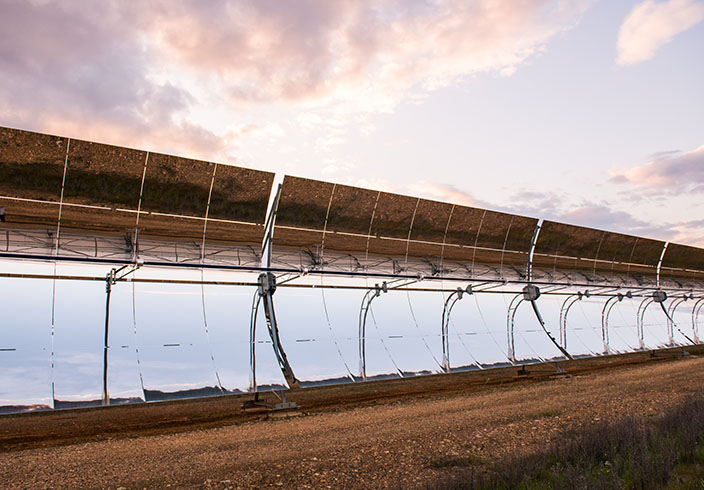With a recent consumption of 245 TWhLHV, industry uses almost 30 per cent of the natural gas consumed in Germany. A large proportion of this is currently used for the production of process heat. In order to reduce natural gas consumption and the resulting greenhouse gas emissions, electrification must also be driven forward. Power-to-heat solutions make it possible to efficiently decarbonise process heat. Particularly for the temperature range below 500°C, which accounts for almost half of industrial heat requirements, the generation of process heat using electricity from renewable energy sources is a viable option. The combination with heat storage systems provides additional flexibility.
Power-to-heat: How electricity is turned into heat
The transformation of electricity into heat, known as “power-to-heat” offers an efficient way of turning surplus electricity from renewable energies into heat that is easier to store. A basic distinction is made between two power-to-heat systems: On the one hand, there is the option of transforming electricity directly into heat. Electrode boilers are primarily used for this in an industrial context. In these, renewable electricity can be converted almost one-to-one into heat with the help of electrodes floating in salt water. This means that one kilowatt hour of electricity is converted into just a little less than one kilowatt hour of heat.
A second power-to-heat option is the use of electricity to drive heat pumps. These utilise the electricity to raise the available environmental heat – from groundwater, soil or ambient air – to a higher temperature level. In doing so, they convert every kilowatt of electricity into three to four times the amount of useful heat, which represents a particularly effective utilisation of the available electricity.
Sector coupling through power-to-heat
Power-to-heat also plays an important role with regard to the system integration of renewable energy sources. Due to their volatility, there will increasingly be situations with a surplus of supply on the electricity market in the future. Converting this surplus energy into heat opens up further utilisation options and leads to a higher proportion of renewable energy in the heating sector. This results in a sensible coupling of the electricity and heat sectors while at the same time reducing the use of fossil fuels.
Integration of heat storage in industrial power-to-heat solutions
In addition, unlike electricity, heat can be stored easily and with comparatively low losses. The combination of power-to-heat systems with heat storage solutions therefore makes sense for various reasons, particularly in industry.
Reduce electricity costs through greater flexibility & energy efficiency
Industrial companies achieve greater flexibility through power-to-heat systems by turning available electricity into heat and storing it for later use with the help of heat storage systems. By integrating thermal energy storage systems such as the ThermalBattery™ from ENERGYNEST, which stores energy in the form of heat at temperatures of up to 450°C and feeds it back into production processes as required, companies become much more flexible in terms of when and at what price they purchase their electricity. In times of high electricity availability, companies have the opportunity to purchase it at particularly low cost and thus mobilise additional loads. This allows renewable energy sources to be integrated efficiently. Companies are thus able to decouple the supply of electricity and its use for their production processes over time and store the energy for later, which leads to a much more efficient use of the available electricity.
Reducing CO2 in industrial processes
At the same time, companies are driving their own energy transition and decarbonising their process heat by reducing their CO2 emissions through the reduced use of fossil fuels. Process heat, which is needed in many places in industry, for example in drying processes in the paper and food sectors, becomes CO2-neutral through power-to-heat using renewable energies. Gas boilers can be replaced by modern power-to-heat systems and energy storage solutions. Companies can thus easily reduce or even completely replace fossil fuels without jeopardising the security of supply for their processes.
Are you interested in ENERGYNEST, or have any questions regarding our thermal energy storage solutions or our applications for your specific industry?
Don’t hesitate to drop us a line.



